Solution for treating athlete's foot
Athlete's foot is a fungal disease caused by the fungus in the outermost layer of the skin, which causes red rash spots and is easily spread in other skin areas. Most people often suffer from athlete's foot at least once in their lives. Fungi (Fungi) grows rapidly in warm, humid weather like in the middle of the toe. Athlete's foot can be treated at home with antifungal drugs (applied directly to the skin) and measures to prevent relapse. However, after being cured, fungal skin infections can still recur if there are favorable conditions to proliferate and develop.
Part 1: Diagnosis of athlete's foot
1. Determine if you have foot fungus
If your feet are in direct contact with the contaminated surface, and then leave your feet in the right conditions for fungal bacteria to grow, chances are you will get athlete's foot. Contaminated surfaces such as swimming pools, changing rooms or bathrooms are barefoot, right after contact with athlete's foot.

Other behaviors may also cause you to get athlete's foot on your feet or toes, such as:
- Shoes are too tight, there is no air circulation.
- Wear shoes with plastic insoles.
- Keep your feet wet or damp for a long time.
- Legs are often sweating.
- Injury to the skin of the feet or toenails.
2. Recognize the symptoms of athlete's foot
Most symptoms of athlete's foot often cause discomfort on the skin. There are 3 types of athlete's foot and symptoms may differ slightly from the symptoms you already know. Symptoms may be mild, relative or even severe.

Some symptoms like itching, may be worse when you take off your socks and shoes. Here are the symptoms of athlete's foot:
- Itchy and uncomfortable.
- Skin peeling or crusting.
- Cracked skin.
- Bleed.
- Pain in the affected area.
- The skin is slightly pink or redder than the rest of the skin (if you have white skin).
3. Check again if your feet show signs of athlete's foot
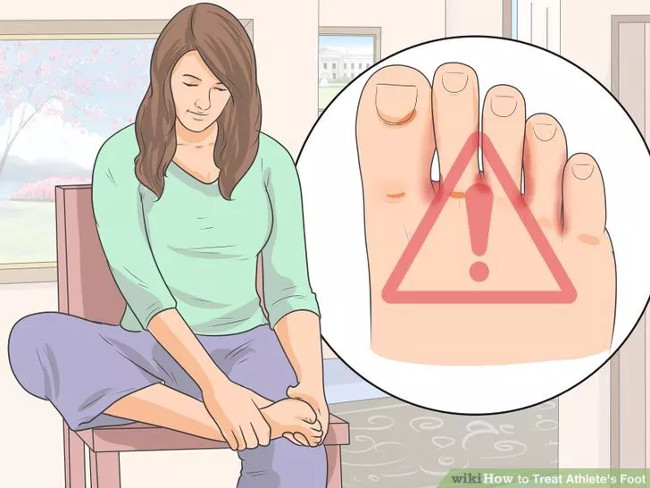
Look closely at both feet in the light so as not to miss any signs. Pay special attention to the interstitial and soles of the feet. If you see any skin that is red or peeling or flaking on the skin and has the symptoms mentioned above, you should be treated immediately.
4. Check fungi on toes
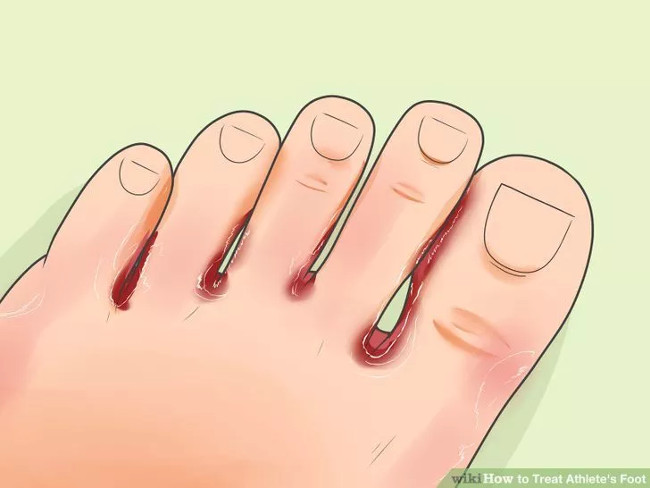
The toe fungus is a type of athlete's foot that usually appears between the fourth toe and the little toe. Watch for signs of athlete's foot in areas like scaly, peeling or cracking. Fungal bacteria can also attack these skin areas, making the disease worse.
5. Check moccasin - foot fungus
Fungal infections of Moccasin foot skin may begin with mild swelling or cracking symptoms in the heel or areas under the soles of the feet. The condition may worsen, affecting the toenails that make the nails swollen, broken or loose. Be sure to check for signs of swelling or infection in the toenails.
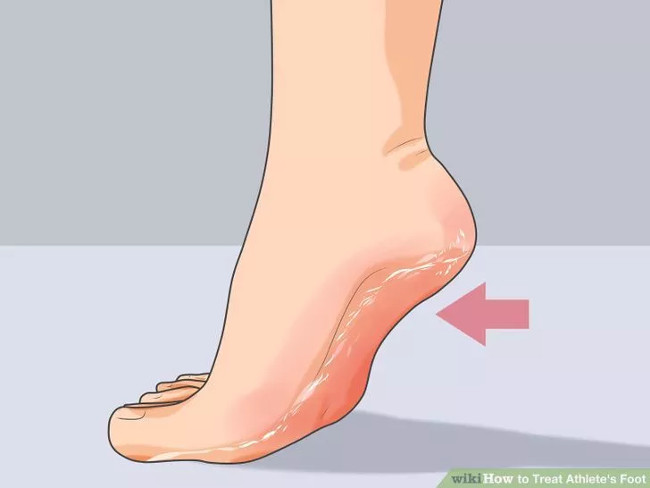
6. Check for blisters
This fungus can cause blisters on the feet. Acne usually occurs in the soles of the feet. Infection can occur concurrently with vesicular skin infections, making symptoms more severe.
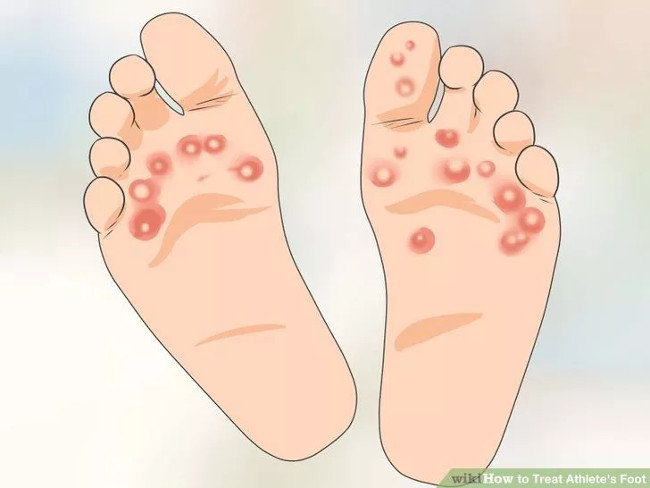
7. Understand that athlete's foot can spread to other areas of the body
Athlete's foot can grow rapidly and quickly under the conditions allowed. You should wash your hands thoroughly after contact with infected skin.
Fungal bacteria can spread to the skin areas of the hands, especially when you regularly use your hands to contact areas of fungal infections in your feet.
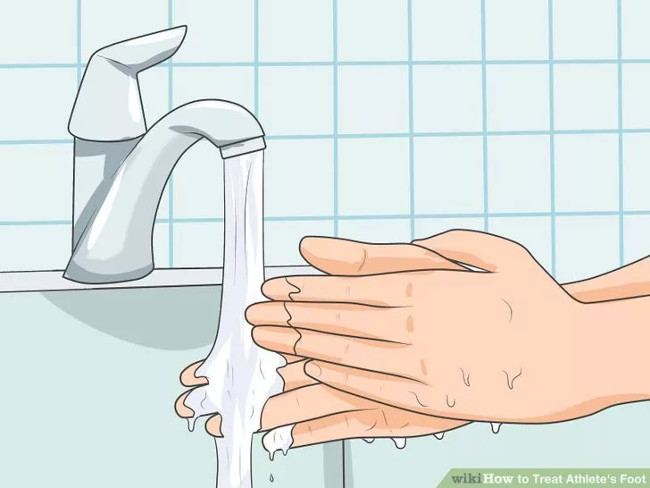
Athlete's foot can spread to nails and toenails. Treating fungi on toenails and fingernails will be more difficult than the areas of fungal skin in the feet.
Athlete's foot can develop into itching in the groin area and the skin on the thigh. You need to know that athlete's foot can spread through your face towel or hand, for example, touch the infected skin and then it can spread to the groin area.
8. Visit the doctor
The doctor will diagnose athlete's foot by examining the area of fungal infections in the legs. They immediately recognize the symptoms of fungal disease with the naked eye. In addition, they may conduct some tests to confirm the diagnosis such as:
- Take a small piece of skin from the infected skin and look at the cell under a microscope.
- Use ultraviolet light to check your feet and see if fungal bacteria are present.
- Send a sample of skin cells to the laboratory for further testing.
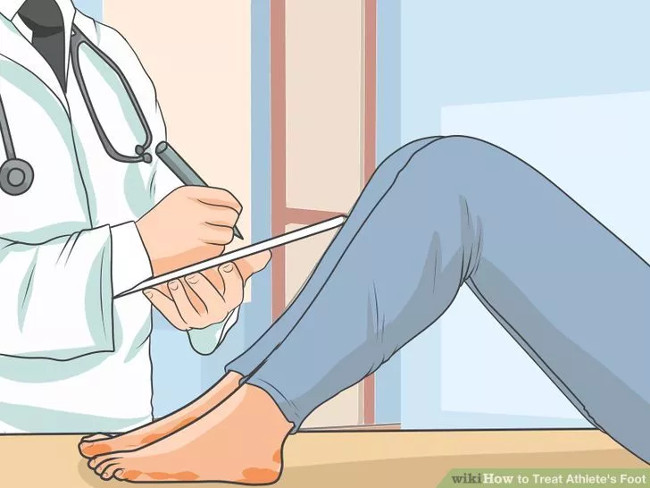
Part 2: How to treat athlete's foot
1. Buy medicine for treating foot fungus without prescription
There are many prescription medicines for athlete's foot that can be prescribed without prescription, such as: topical cream, glue, liquid, powder or wax that can effectively treat athlete's foot. Some people who only need 1-2 weeks of treatment will be cured while others may take 4-8 weeks to get rid of completely. Quick remedies have high costs but shorter treatment times.
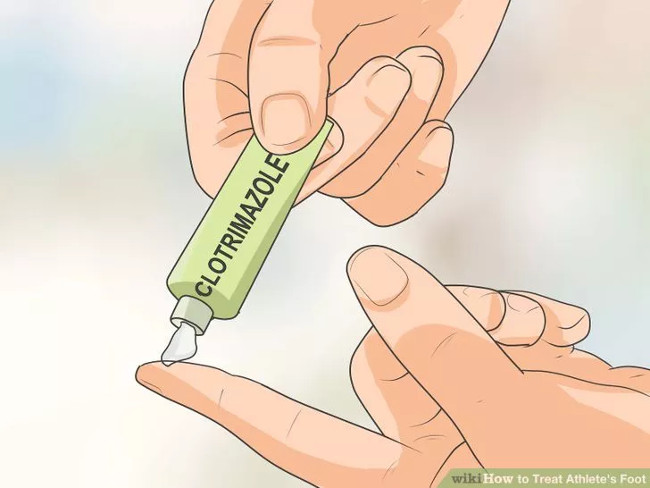
Non-prescription foot creams usually contain the following main ingredients: clotrimazole, miconazole, terbinafine or tolnaftate. The duration of treatment usually lasts from 1 to 8 weeks depending on the type of treatment you choose.
2. Apply antifungal medication
Hands should be washed thoroughly before and after touching fungal skin. The areas of fungal skin should be cleaned and dry thoroughly before applying directly to the red rash as well as the surrounding skin. Even when the redness is gone, fungal bacteria remain on the skin, so you still need to take medicine.
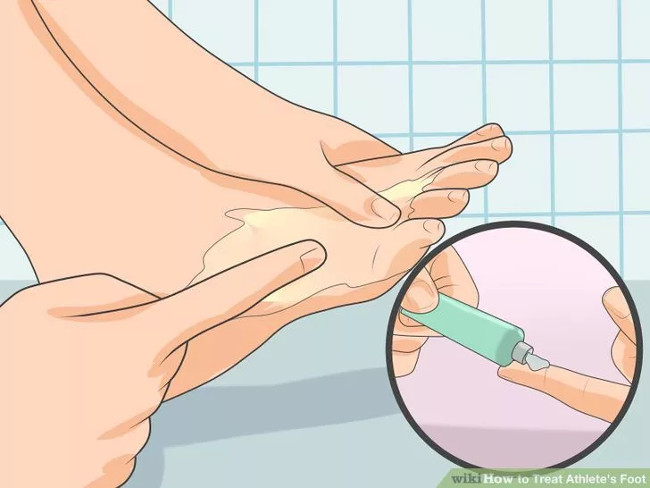
Ideally, you should use a powder or cream antifungal agent for about 1 to 2 weeks after you've killed all fungal bacteria to make sure you're not stuck again.
Use the medicine according to the instructions on the box, tube or booklet that comes with the medicine. Do not ignore dosage instructions, stop taking the medication before the time of treatment as directed - even if symptoms have disappeared.
Do not peel off peeling skin, which can damage healthy skin around and spread fungal pathogens.
3. Use Burow solution
Burow solution can be used on a wide range of skin types without prescription, which can cause wounds to heal and prevent fungal foot infections. In particular, it is also useful when used for the treatment of blisters.
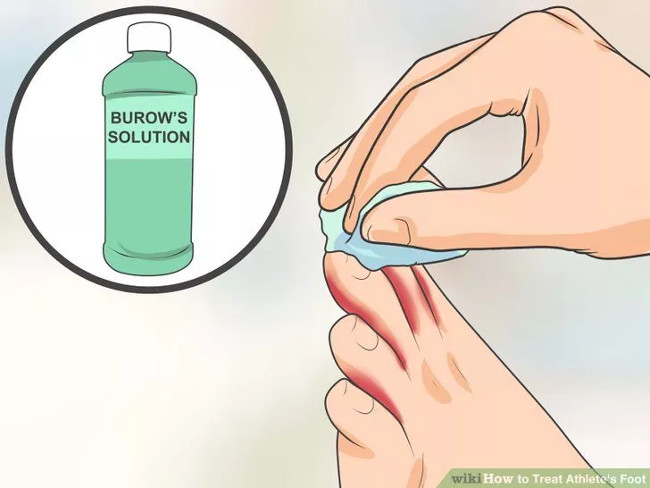
Follow the instructions, soak your feet several times a day for at least 3 days. When the blisters shrink, you can switch to antifungal medication for the affected skin.
You can use a cloth or gauze dipped in Burow solution and apply it to the area of the fungus.
You can try other treatments such as mixing 2/3 warm water and 1/3 vinegar.
4. Keep your feet as dry as possible
Fungal bacteria thrive in warm and humid environments. So try to keep your feet dry all day.
- Regularly change socks and shoes to keep them dry. If all is wet, you should change it. Should use clean socks made of cotton, because synthetic fiber socks are not able to absorb sweat as well as cotton.
- You can use a tip to get a desiccant bag (usually in a dry cow's bag) inside the socks. This may make you feel uncomfortable but the silica is extremely hygroscopic - that's why they leave the bag hygroscopic in a dry cow's bag.
- Use talcum powder (Talc powder) or antifungal powder to apply on your feet or to the inside of the shoe to prevent fungal infection.
- Open-toe shoes or sandals as much as possible.
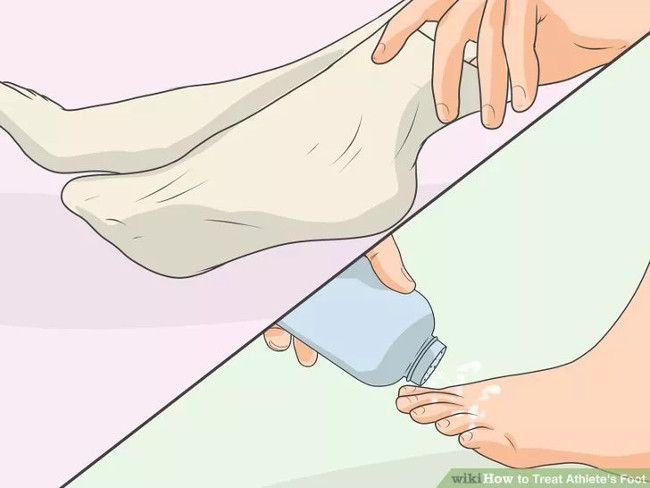
5. Use tea or garlic oil
These natural therapies work to treat athlete's foot if used regularly. Because tea and garlic oils contain antifungal compounds that are effective in treating fungal infections. Although tea tree oil and garlic oil can help reduce the symptoms of athlete's foot, it is not possible to treat it thoroughly.
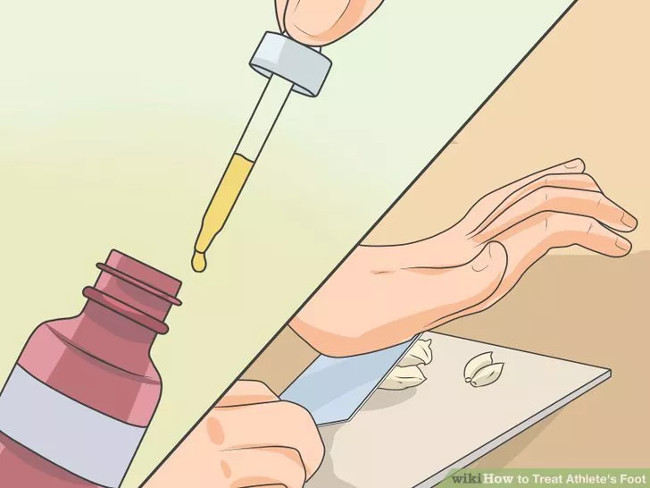
6. Use doctor prescription drugs
If you suffer from severe or long-term fungal skin infections, your doctor will prescribe an antifungal medication or oral medication for you. Some prescription antifungals may cause side effects. Ask carefully about the drugs your doctor prescribes for you.
- Severe antifungals can contain ingredients such as butenafine, clotrimazole or naftifine.
- Anti-fungal oral medications include fluconazole, itraconazole and terbinafine. You usually have to take medicine for 2 to 8 weeks, depending on the prescription you are prescribed.
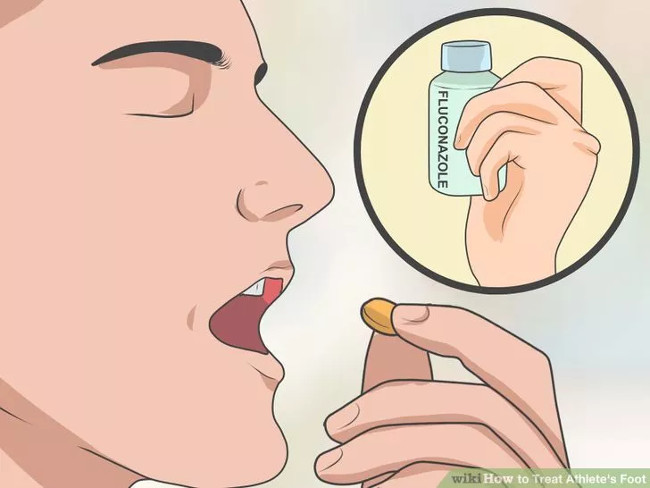
Part 3: Preventive measures for athlete's foot
1. Warm skin disease can spread
Therefore, you need to take precautions, protect against factors that can spread the disease. Never go barefoot in public places, especially in wet places.
Dry your feet dry after bathing or swimming before wearing shoes.
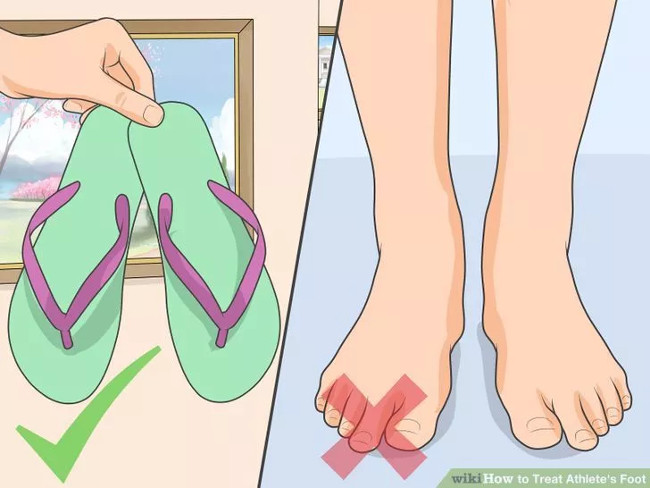
2. Regularly clean shoes
Dry shoes at least 24 hours before going again. Fungal bacteria can reside in your shoes, so you won't want to get sick again. To make sure shoes are not pathogenic, you should wear different shoes every day.
Buy new shoes if necessary.
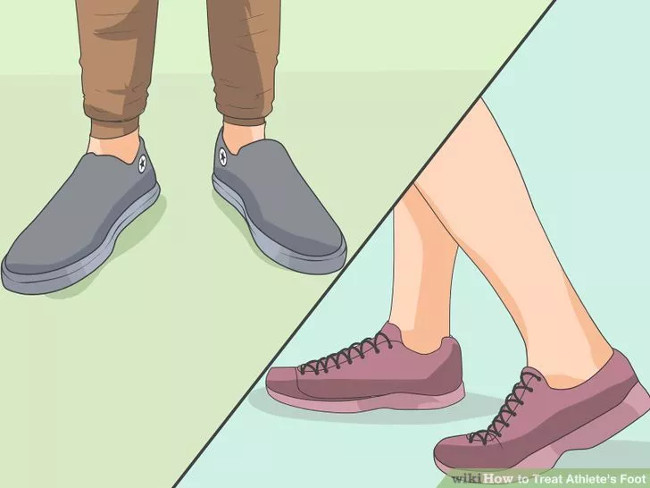
3. Clean clothes, tools and shoes.
Any item that comes in contact with infected foot skin must be cleaned with bleach or other sanitizers. Items like nail tools, shoes, socks or anything that touches your feet. You will probably never want to get athlete's foot again after having invested too much time to treat it.
Use hot water and bleach to wash shoes and clothes to kill fungal foot fungus.
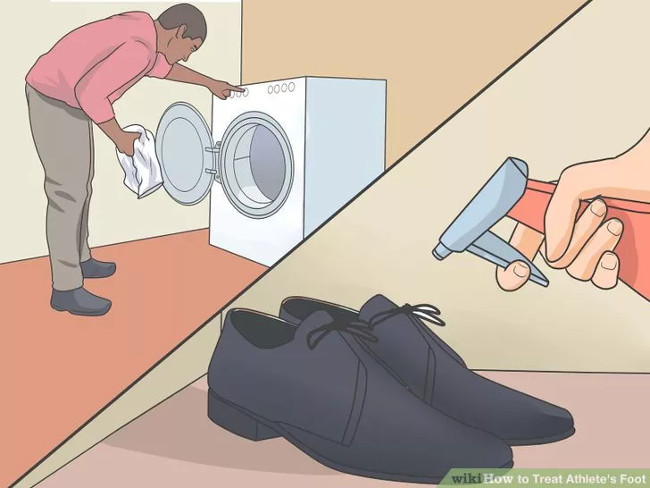
4. Wear a bit of shoes.
If shoes are too tight, the air cannot circulate inside the shoe, so fungal bacteria are also easier to grow. You can also use sheep wool between your legs to keep them from getting close when you wear shoes. Lamb wool can be found at pharmacies or foot care centers.
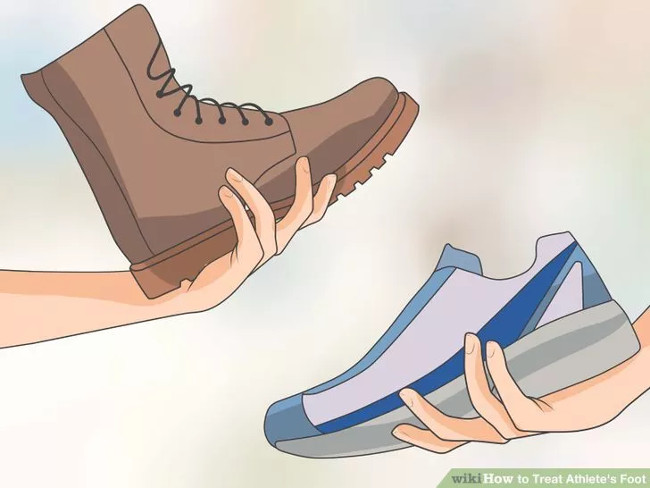
 The 5 greatest athletes of the ancient Olympic congress
The 5 greatest athletes of the ancient Olympic congress Mix foot soak to eliminate bad smell and prevent leg fatigue effectively
Mix foot soak to eliminate bad smell and prevent leg fatigue effectively 3 methods that treat permanent foot warts that are simple
3 methods that treat permanent foot warts that are simple Buy the best foot massage basin?
Buy the best foot massage basin? Which foot massage machine should buy the best today?
Which foot massage machine should buy the best today?